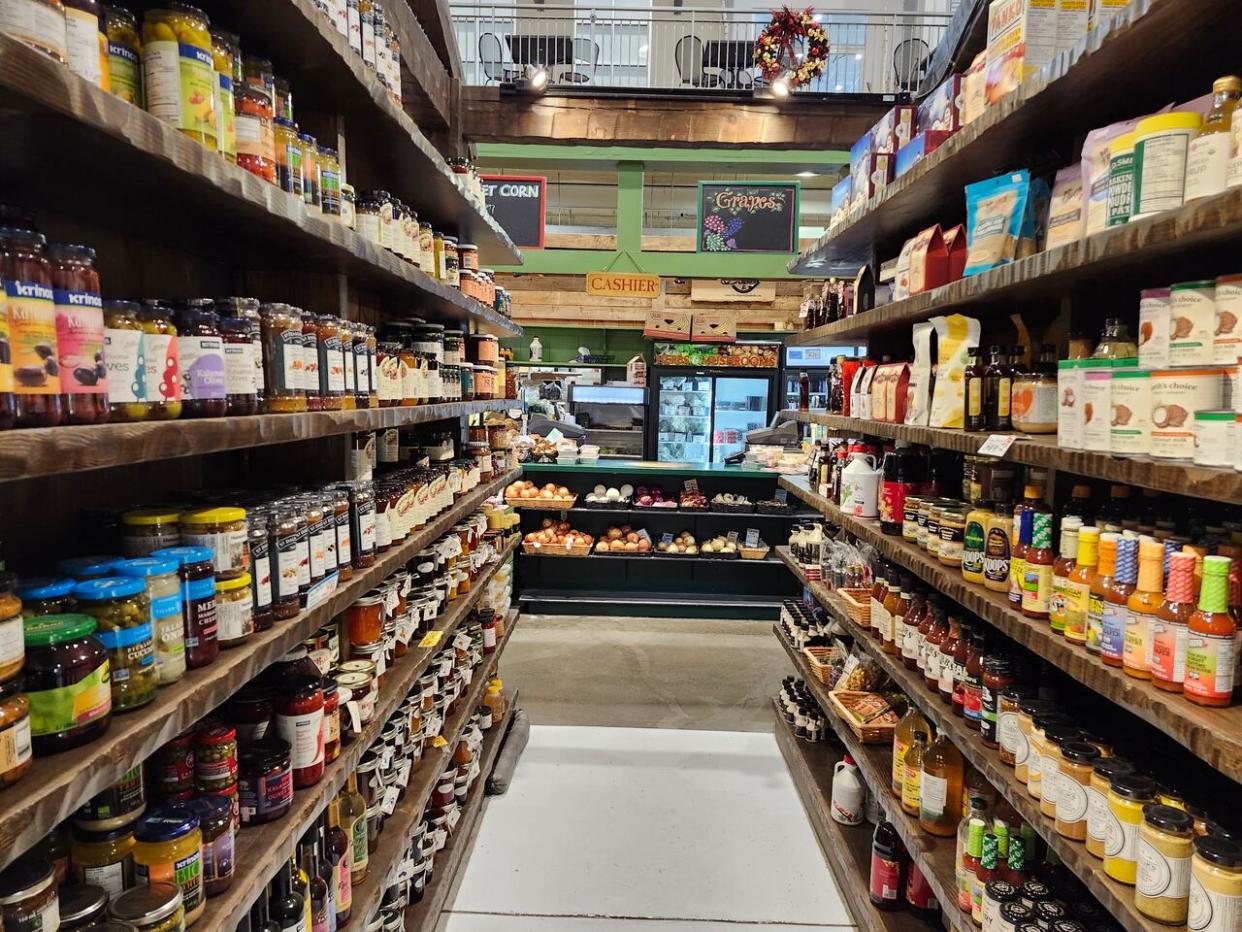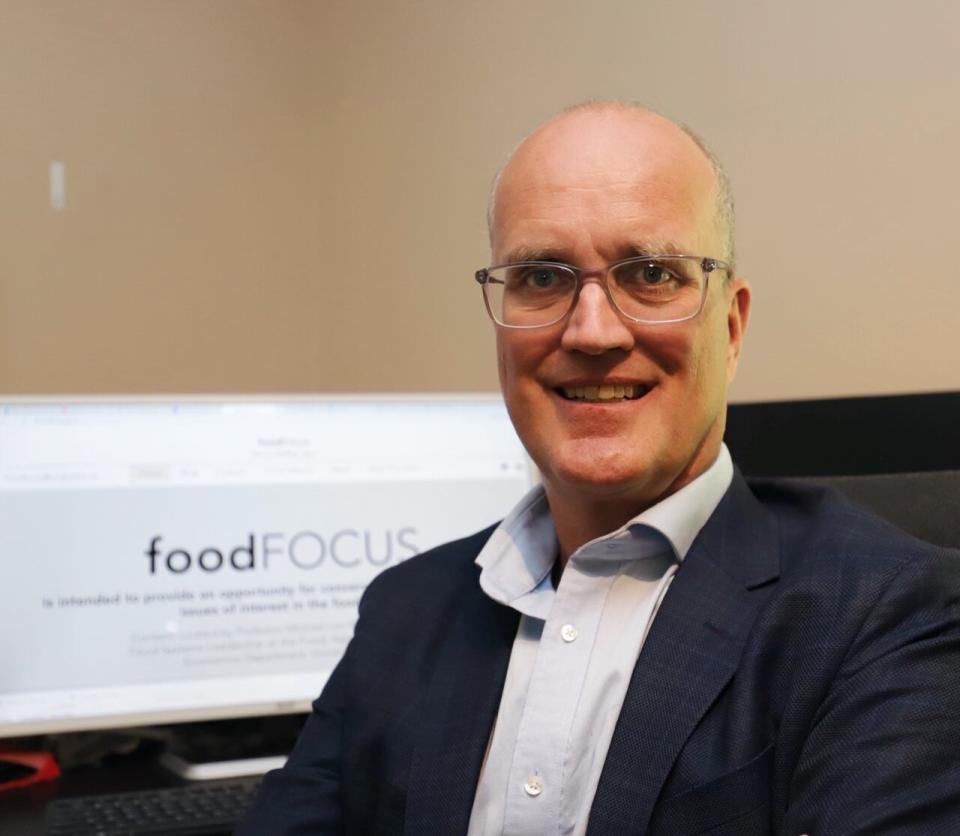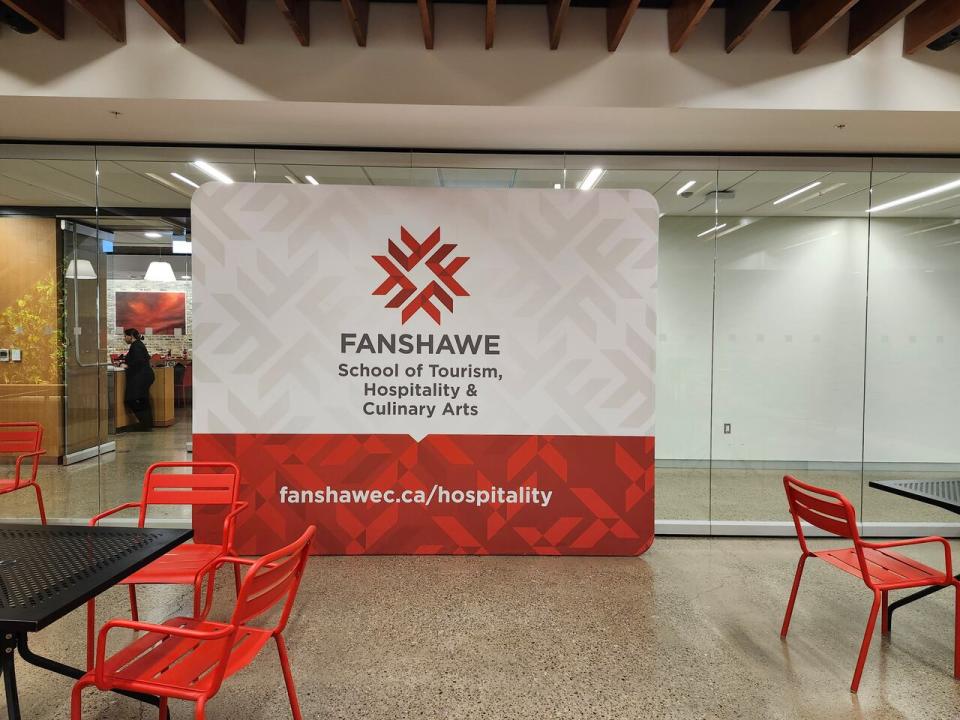To eat out or eat in? With rising costs, some people are thinking twice

The battle between the cost of food versus convenience is leaving some people in London, Ont., in disarray while deciding whether to make or buy their next meal.
That's true for Alma Mux Wahl.
Every week, Wahl spends about $60 ordering food or drinks at restaurants and cafés like Grace Bodega and The Green Window in downtown London.
"I'm not always organized enough to bring lunch," said Mux Wahl. "But I do think probably making food at home is cheaper. It's just having the time and the organization that sometimes gives you a struggle."
Despite the costs of eating out, Mux Wahl finds that when ordering from a restaurant, she's not only paying for the food, but also the atmosphere.

A restaurant worker prepares food at SOI Thaifoon, a Thai restaurant in downtown Kitchener, Ont. (Arfa Rana/CBC)
"The social aspect of going out with your co-workers or friends and getting out of the workspace sometimes — it's worth the cost of that."
Expenses are rising for restaurants too
Michael Von Massow, professor of food economics at the University of Guelph, said restaurants tend to be pricier because you're also paying for the environment and the people preparing your food.
"Just like our food in the grocery store has gone up, we know that food going into restaurants has also gone up, plus their rent has gone up, plus their labour costs have gone up " said Massow.
"So in many of these cases, restaurant prices have gone up, actually, more than the prices in grocery stores."

Michael Von Massow, professor of food economics at University of Guelph, says restaurants tend to be pricier because you're also paying for the environment and the food preparers. (Arfa Rana/CBC)
But in some cases, paying for an already-made and packaged meal may be a less costly option.
"At our house when we're both tired, those rotisserie chickens…they're relatively inexpensive, and [it's] actually often cheaper to buy a cooked chicken at a grocery store than it is to buy an uncooked chicken and cook it at home," said Massow. "So being selective, being vigilant, lets you buy stuff that is affordable and also healthy."
Food budgeting a focus at culinary school
A chef at Fanshawe College said some students in their culinary arts programs have directly expressed their concerns over rising food costs to him.
The tuition fees for the two-year culinary management program and culinary skills program at Fanshawe College includes the cost of ingredients used by students to cook in labs twice a week.
"Unfortunately, with the cost of food, we've had to make some adjustments to the lab fees," said Patrick Hersey, a professor and co-ordinator of the culinary management and culinary skills programs.
For that reason, Hersey also teaches students how to budget their lunches and dinners to make the most of simple ingredients so they are not wasting any extra money — or food — on meals than what they have to.

The tuition fees for the two-year culinary management program and culinary skills program at Fanshawe College includes the cost of ingredients. (Arfa Rana/CBC)
"You'd be impressed how you can take a cup of flour and a potato and mix it together, the next thing you know, you got gnocchi for four people," said Hersey.
He said people tend to make cooking at home costly when they decide to put together a unique dish with new ingredients. He gives the example of someone making a shawarma for the first time.
"I know you would probably have to have at least six different spices in your pantry in order to marinate or season the meat," said Hersey. "Ideally, what you want to avoid is buying an ingredient that you're only going to use once or twice."
He added it's best to order takeout when you're craving a dish with ingredients you don't typically use at home or make that dish yourself but reuse those ingredients to avoid food waste.


